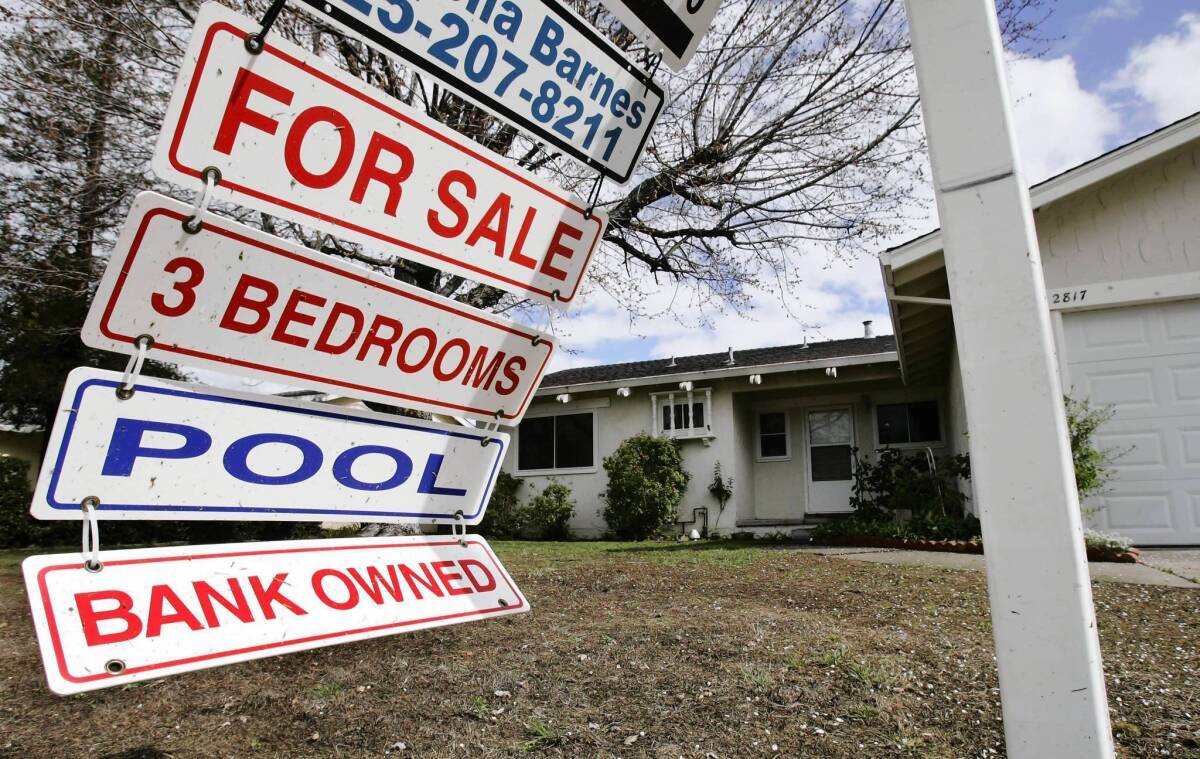Keep Your Home California relief still slow but picking up steam

A federal foreclosure-prevention effort that earmarked nearly $2 billion to help troubled California homeowners has delivered only about one-sixth of those funds during its three years in existence.
The pace of assistance is finally accelerating, according to officials overseeing the state’s delivery vehicle for the funds, known as Keep Your Home California. They said the pipeline is swelling because Bank of America, Wells Fargo Bank and Chase Bank -- the biggest providers of mortgage customer service -- all have now agreed to use the funds for principal reduction.
Quiz: How much do you know about mortgages?
Many banks, including Wells and Chase, were slow to use the program for principal reduction. That was in large part because Fannie Mae and Freddie Mac, government-controlled mortgage buyers that back about 60% of all California home loans, were opposed to lowering the balance owed on mortgages.
But last year, Fannie and Freddie gave the go-ahead for principal reduction -- so long as servicers used only the government funds to write down balances, not contributions from the banks and mortgage investors. BofA signed on to principal reductions through the program last summer, and Wells and Chase began writing down loan balances this year.
“We have the funding to help many, many more homeowners with our free assistance,” Claudia Cappio, head of the California Housing Finance Agency, said in a statement Monday. She encouraged anyone having difficulty with their mortgage to call the program at (888) 954-5337.
Borrowers seeking principal reduction must owe more than their homes are worth. They also must show that they are financially troubled -- a requirement that has proved problematic, said Diane Richardson, legislative director for the California Housing Finance Agency, which developed the state’s program.
“I still think [the money] should be flying out the door, and it’s not,” Richardson said in an interview. “People have a hard time documenting hardship.”
PHOTOS: Bank failures that drained deposit-insurance funds
California was among 18 states and the District of Columbia eligible for assistance from the U.S. Treasury Department’s Hardest Hit Fund. The program was funded with $7.6 billion left over from efforts to stem the financial crisis, chiefly by bailing out giant financial firms and the auto industry.
The federal government allowed the states to tailor their own programs aimed at the specific needs of state residents. However, the Treasury Department had to approve the state programs and it releases funds only as borrowers qualify for relief, not in a lump sum.
California’s efforts included four programs, including the centerpiece principal reduction effort, which initially was set up to match reductions by banks dollar for dollar. After banks showed little interest, it was changed so that servicers could use the funds to lower the amount owed without a matching contribution from the banks.
The latest Treasury Department report on the Hardest Hit program, for the quarter that ended Dec. 31, showed that just over $1 billion in aid had been delivered by the 18 states and the District of Columbia. An additional $236 million had been spent on administration, outreach and counseling.
California had spent $244.6 million of its $2-billion allocation on aid as of the end of 2012, with an additional $45.4 million spent on administration and interaction with potential recipients.
Richardson said about $300 million in aid has now been delivered to state residents, with an additional $300 million in the pipeline.
“At this time last year we had 12 servicers participating,” she said. “And now we’ve probably got close to 70.”
ALSO:
Audit faults execution of foreclosure-prevention aid
Changes may bring relief to more underwater borrowers
Bank of America agrees to write down principal for California borrowers







